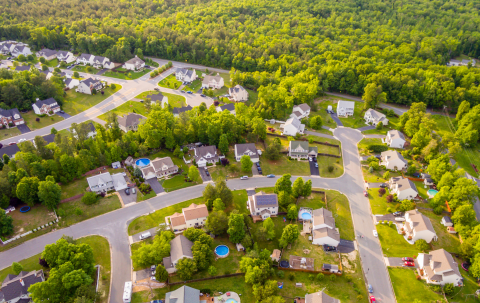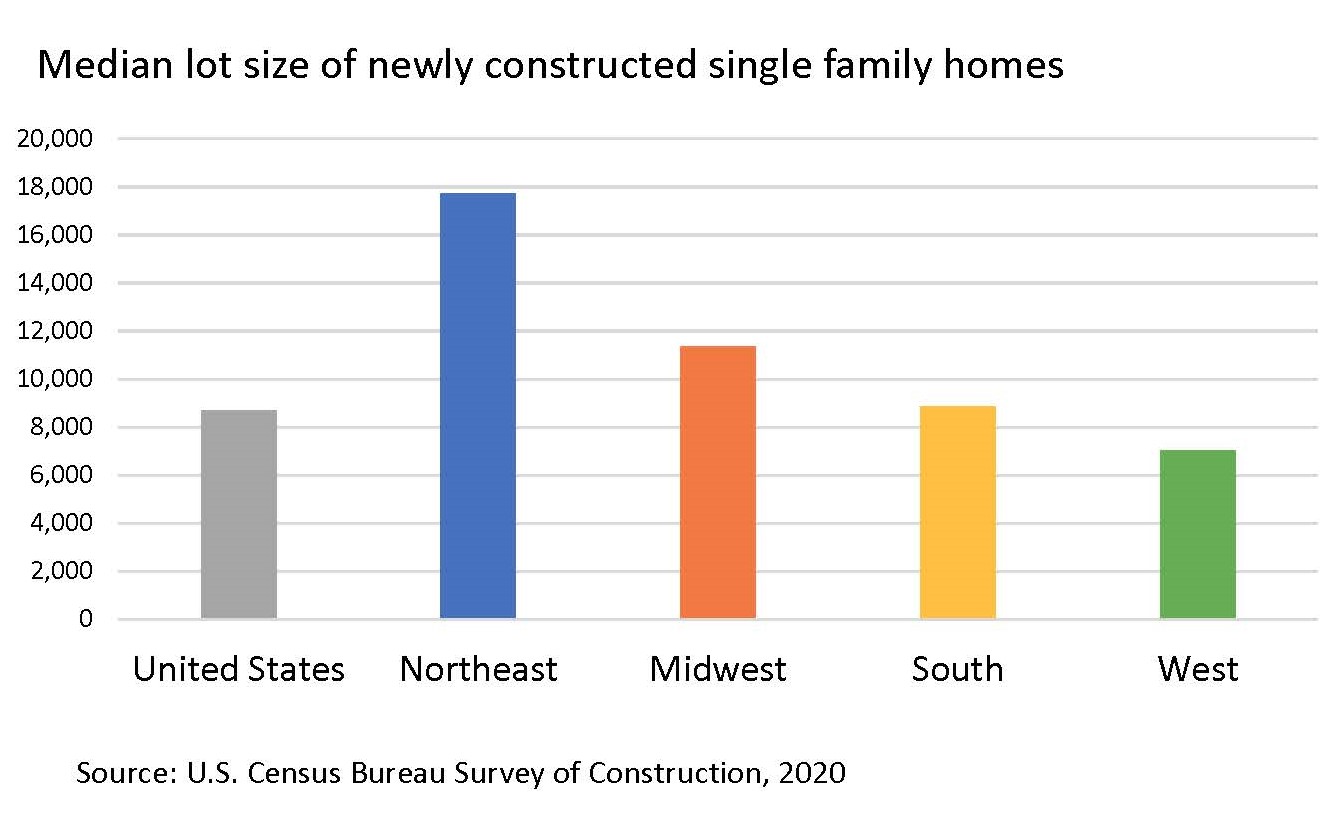Construction survey data finds that new homes in the Northeast tend to be built on far larger lot sizes than elsewhere in the country. The median newly built single-family home in the Northeast was built on a little under half an acre, compared to less than a quarter of an acre nationwide. Research suggests that strict zoning laws are responsible for the disparity and have resulted in higher home development costs and sale prices.

According to the Census Bureau’s Survey of Construction, in 2020 the median lot size for new single-family homes in the Northeast was 17,722 square feet compared to 8,690 square feet overall in the U.S. and just 7,044 square feet in the West. This is the exact opposite of what should be expected, given the fact that the Northeast is the most densely populated region of the country overall. The region is more built out than other parts of the country, with less developable land still available. While one would expect communities to make the most out of scarcer spaces, instead, new homes in the Northeast have larger lots.

Housing experts suggest that this phenomenon is due in large part to strict local zoning laws. A 2006 Wharton study that attempted to quantify the strictness of zoning policy found that New England and the mid-Atlantic region are the most highly regulated regions of the country, with Vermont ranking 16th in strictness overall. Many New England communities have large minimum lot sizes for newly-built homes as well as low density requirements, the maximum number of homes per acre that may be built within a particular area. The more land required to build a home, the more expensive that housing will cost to build.
Land costs are inevitably passed on to renters or homebuyers. According to the National Association of Home Builders, land costs account for roughly 26% of home sale costs in New England, compared to just 17% in the U.S overall. This may be a significant factor in Vermont’s rapidly growing new home prices. Difficulty in building new homes impacts even buyers of older and less expensive homes due to a process referred to as filtering. Allowing the private market to build sufficient new homes helps free up an existing home for middle- or lower-income buyers or renters and helps contain price growth.
How can towns work to unravel zoning laws that contribute to high prices? The Vermont Department of Housing & Community Development (DCHD) has produced Enabling Better Places: Zoning for Great Neighborhoods, a manual for how municipalities can implement small, incremental changes to build more walkable, vibrant communities. In addition, VHFA’s Housing Ready Toolbox help communities advocate for and implement housing-friendly policies.

